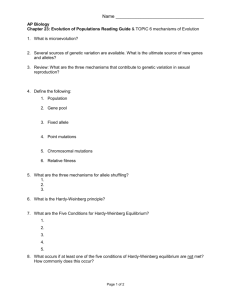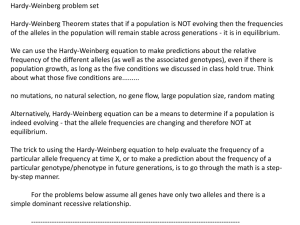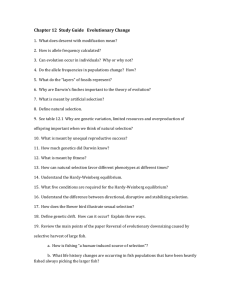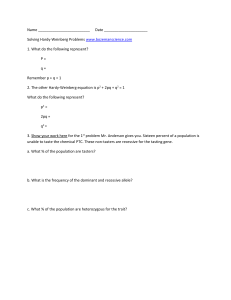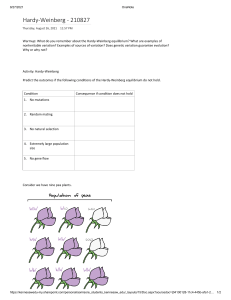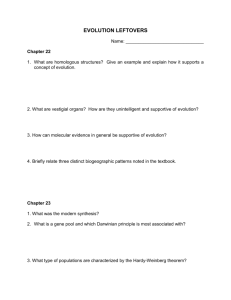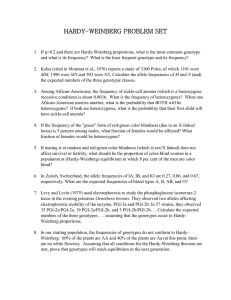Polygenic inheritance and genes in populations
advertisement
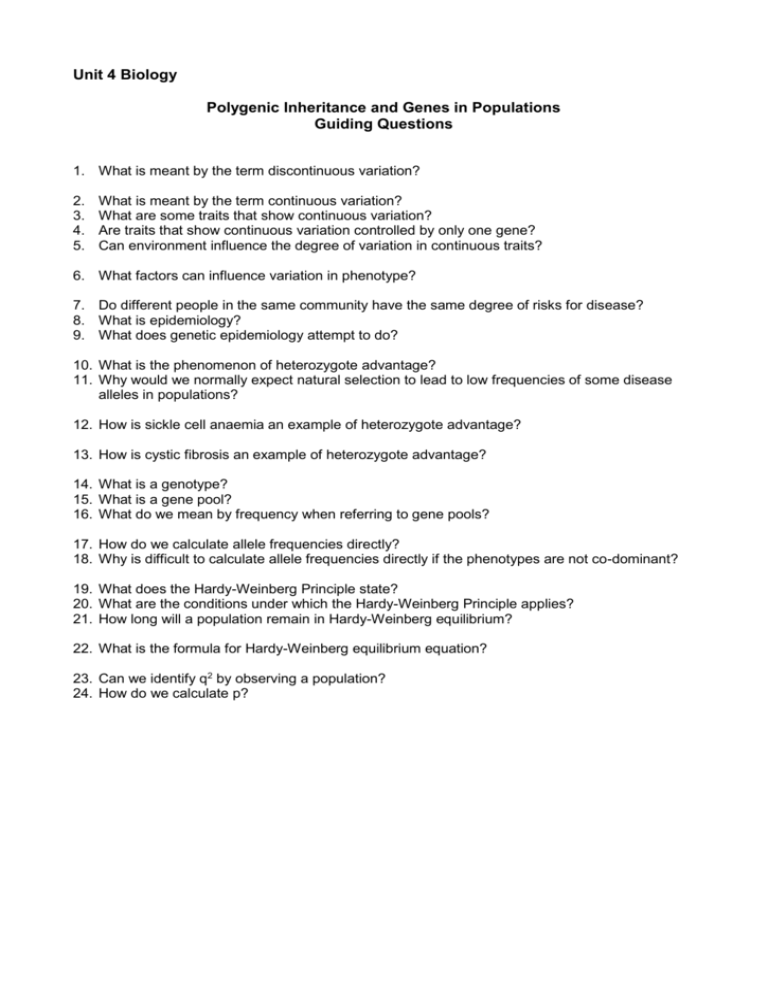
Unit 4 Biology Polygenic Inheritance and Genes in Populations Guiding Questions 1. What is meant by the term discontinuous variation? 2. 3. 4. 5. What is meant by the term continuous variation? What are some traits that show continuous variation? Are traits that show continuous variation controlled by only one gene? Can environment influence the degree of variation in continuous traits? 6. What factors can influence variation in phenotype? 7. Do different people in the same community have the same degree of risks for disease? 8. What is epidemiology? 9. What does genetic epidemiology attempt to do? 10. What is the phenomenon of heterozygote advantage? 11. Why would we normally expect natural selection to lead to low frequencies of some disease alleles in populations? 12. How is sickle cell anaemia an example of heterozygote advantage? 13. How is cystic fibrosis an example of heterozygote advantage? 14. What is a genotype? 15. What is a gene pool? 16. What do we mean by frequency when referring to gene pools? 17. How do we calculate allele frequencies directly? 18. Why is difficult to calculate allele frequencies directly if the phenotypes are not co-dominant? 19. What does the Hardy-Weinberg Principle state? 20. What are the conditions under which the Hardy-Weinberg Principle applies? 21. How long will a population remain in Hardy-Weinberg equilibrium? 22. What is the formula for Hardy-Weinberg equilibrium equation? 23. Can we identify q2 by observing a population? 24. How do we calculate p?

